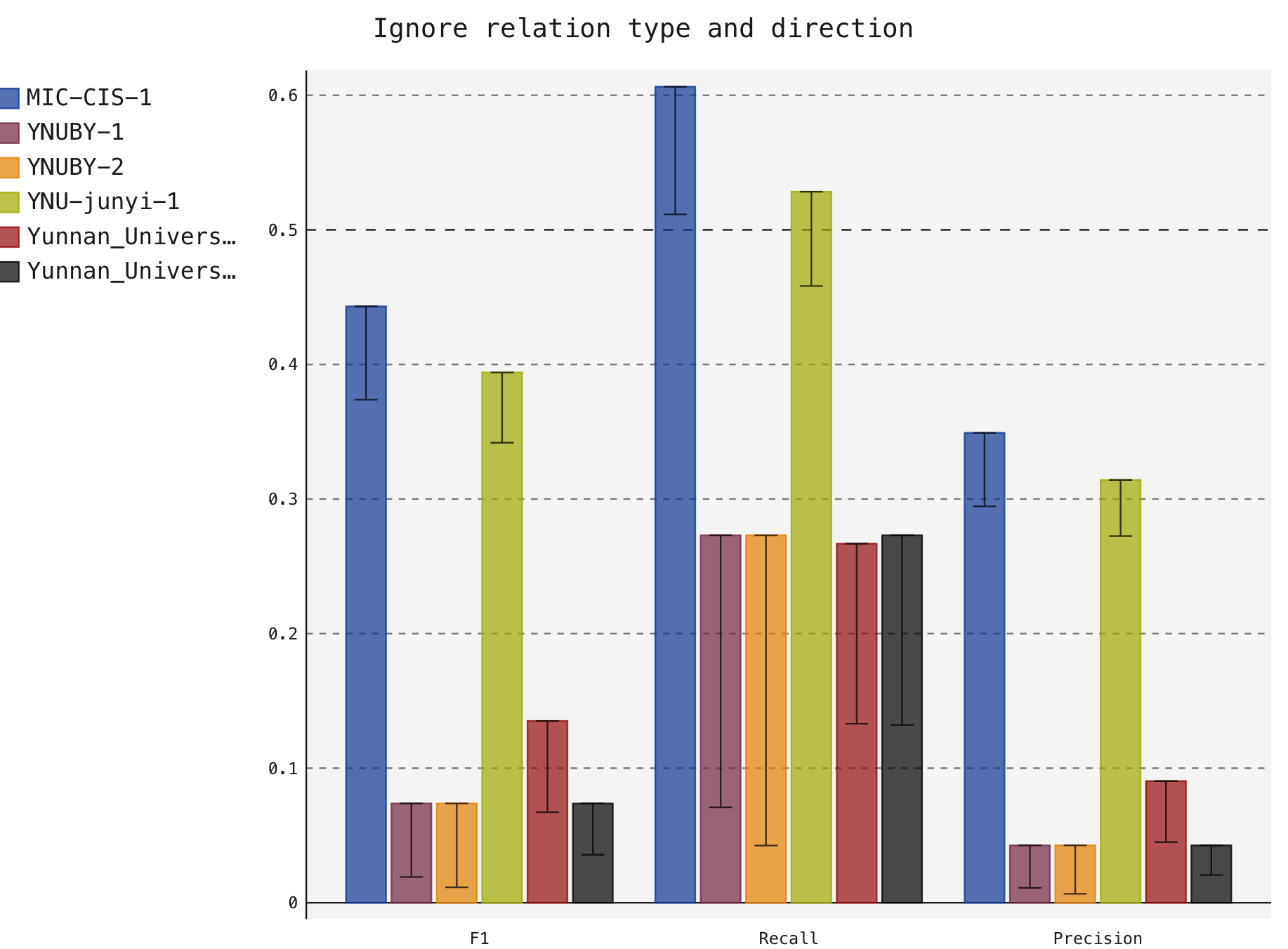Participating teams
Four teams participated to the SeeDev-binary task and submitted 6 runs:
- MIC-CIS (1 run)
- YNUBY (2 runs)
- YNU-junyi (1 run)
- Yunnan University 1510 (2 runs)
Evaluation
You may check and evaluate your predictions:
- on the training and development sets with the evaluation software;
- on the test set with the online evaluation service.
The evaluation is described on the BioNLP-ST 2016 SeeDev page.
You can download all the charts and tables shown below.
Global results
Here are the global results for each run expressed in F1, Recall and Precision.
The confidence interval has been obtained by bootstrap resampling (n=100).

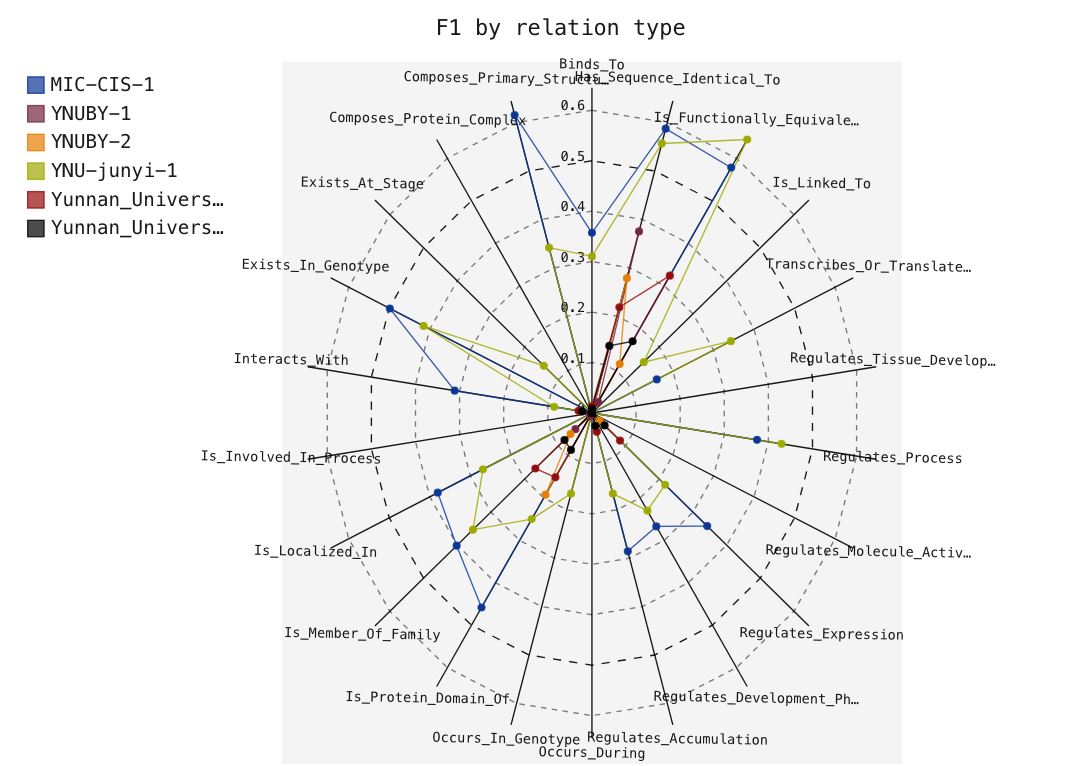 | Results by relation typeEach axis represents a different type of relation. |
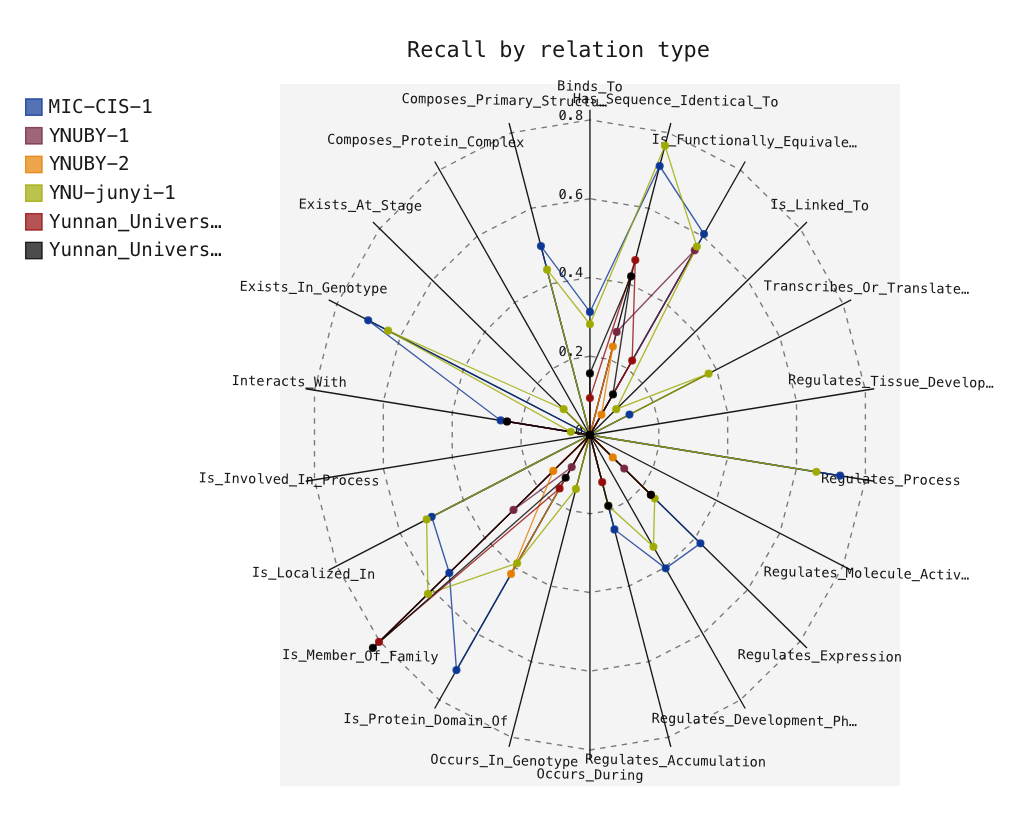 | 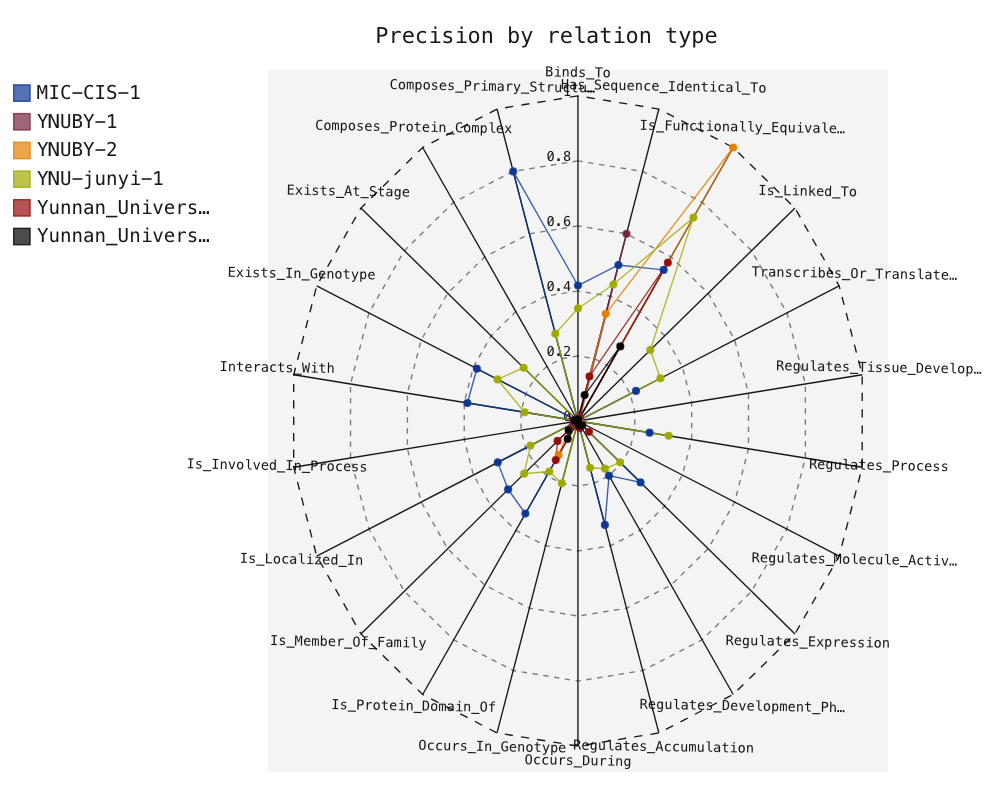 |
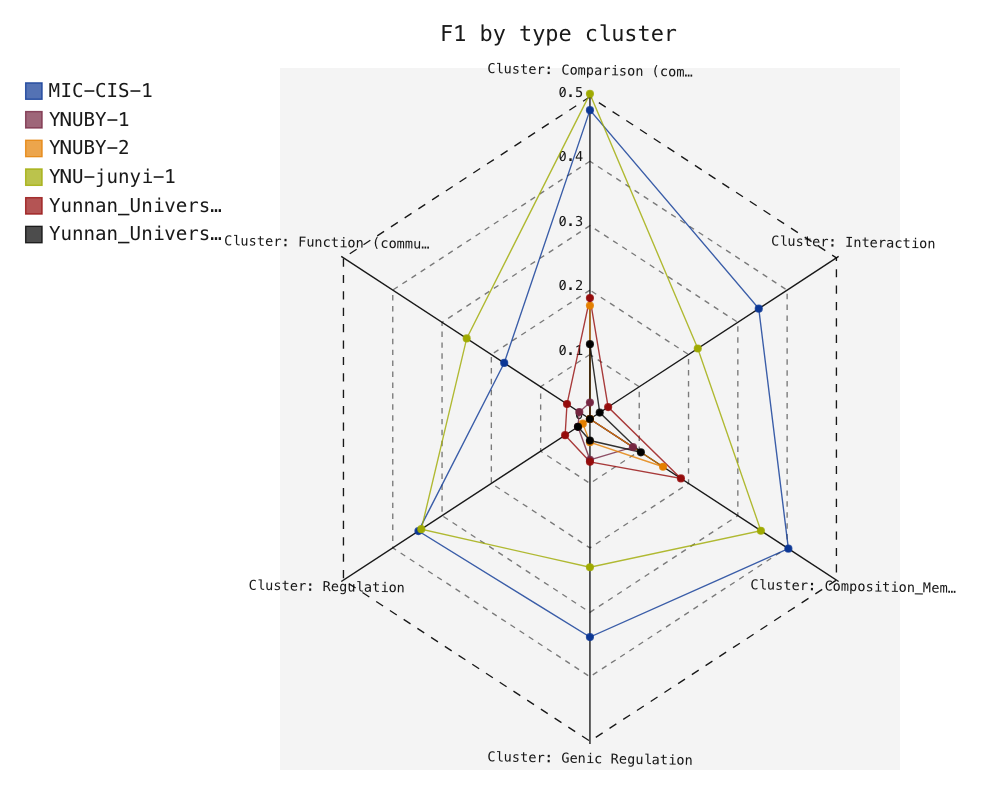 | Relations by type clusterRelation types have been gathered by cluster of similar types, thus reducing the number of categories of relations.
|
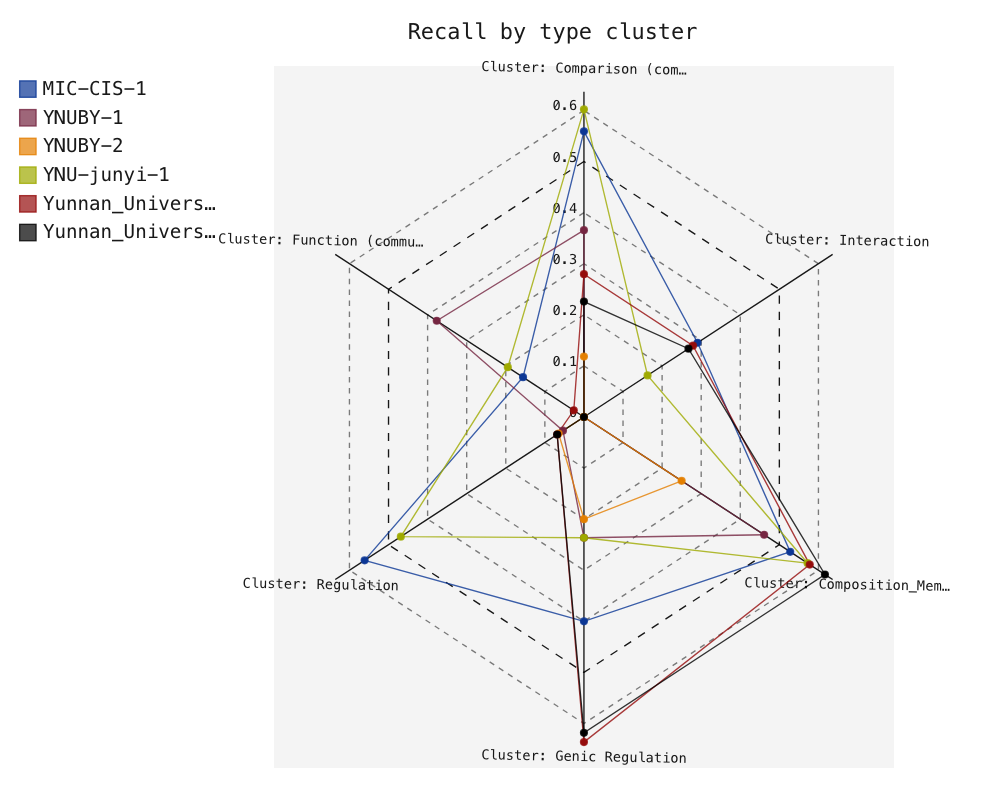 | 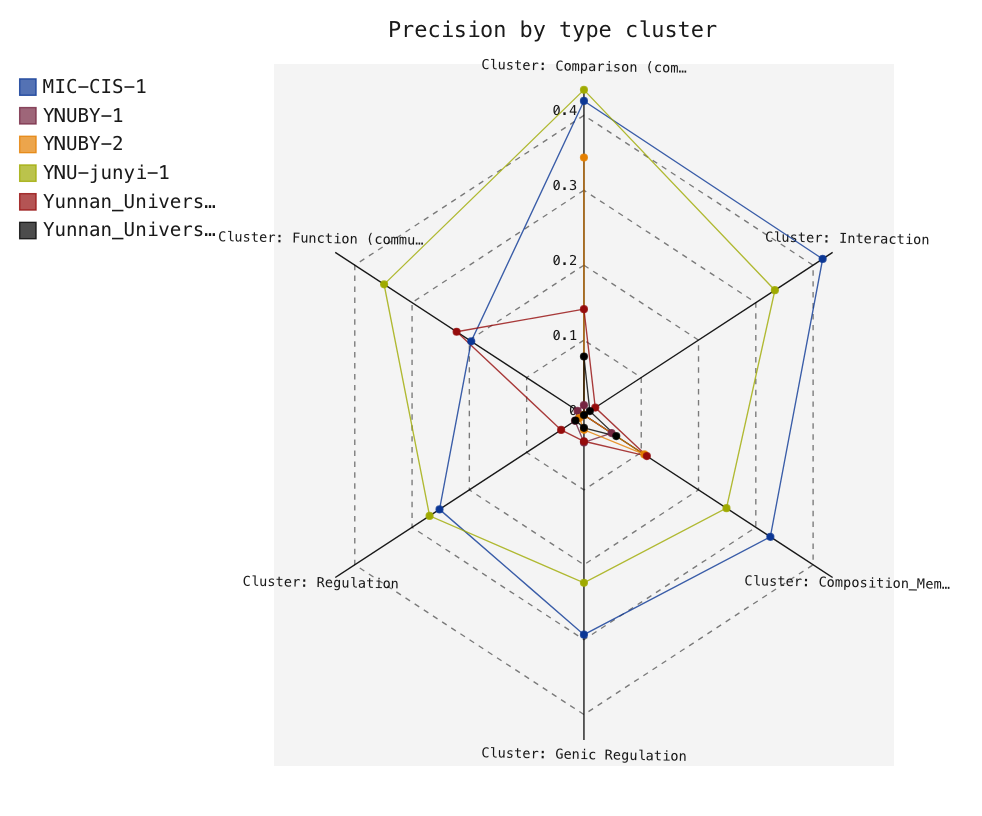 |
Ignoring relation types and direction
The tick on each bar indicates the gain compared to the global results.
